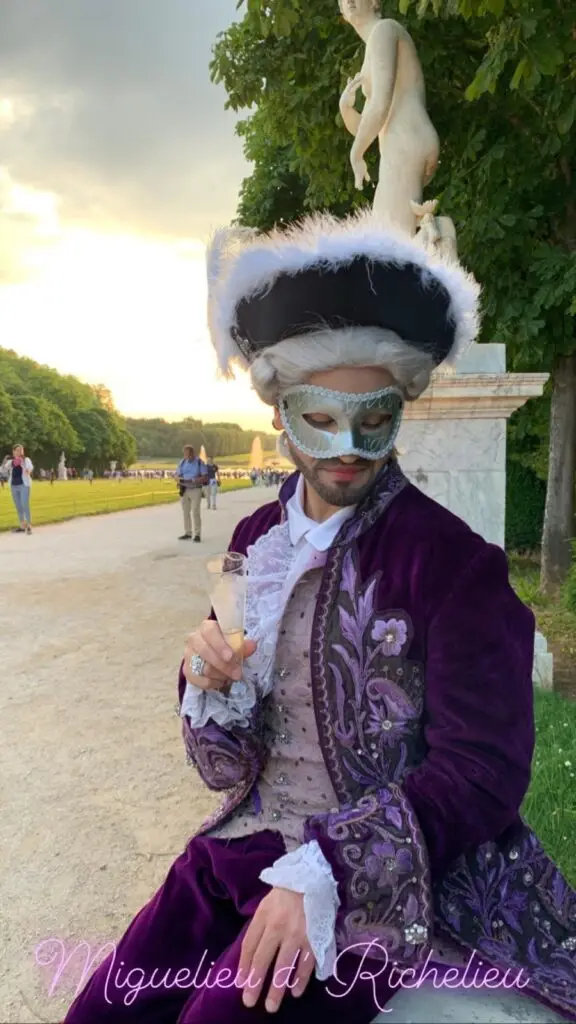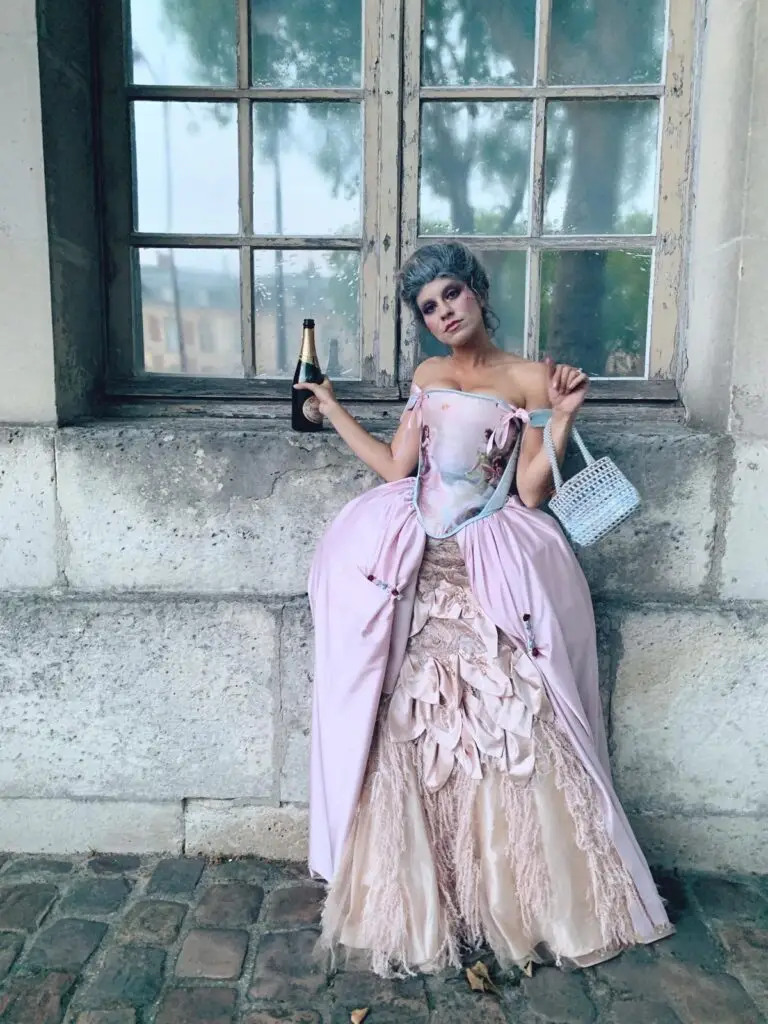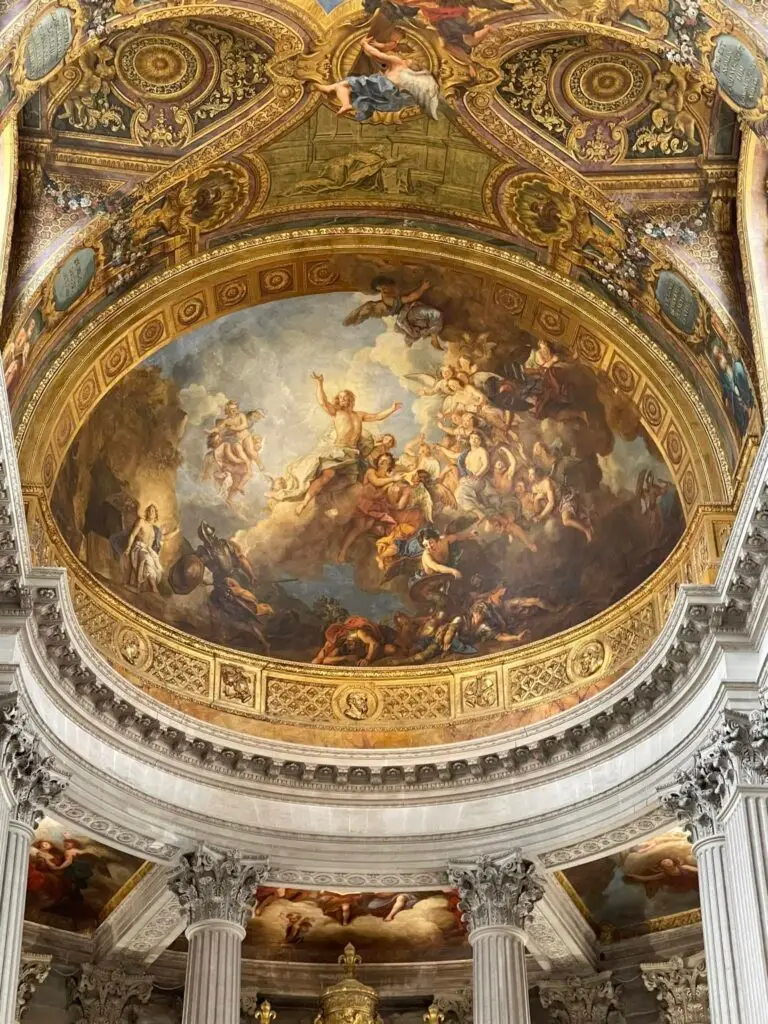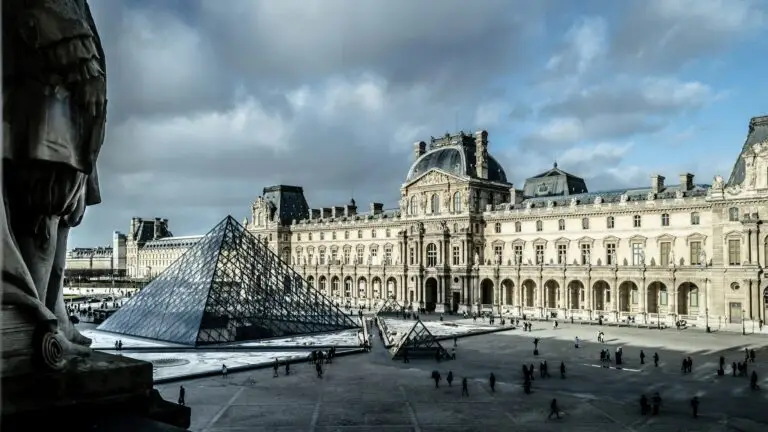For most people, attending a masked ball at the Palace of Versailles once would be the experience of a lifetime. For Juan Amoroso (@juanderlust80), it became an annual pilgrimage of creativity and craftsmanship that has spanned over a decade.
“I’ve been lucky enough to be a guest of the masque ball 10 times,” he reflects.
Juan represents a rare breed of attendee—one who has witnessed the evolution of this enchanting event while perfecting the art of costume creation.
From Party Store Pirates to Handcrafted Royalty
Juan’s journey began humbly, as many great stories do. When asked about his very first costume, he laughs: “My first costume was sourced from a ‘Party City like’ store, and it resembled something more of a pirate than a royal court member in the 18th century.” It’s a confession that might surprise those who know Juan’s reputation for creating stunning, historically-inspired masterpieces entirely by hand.
The transformation didn’t happen overnight. Juan’s approach to costume-making evolved naturally over the years, driven by a growing understanding of what the ball represented and what he wanted to contribute to its magic.
“The first 2 were store bought costumes. Every other was custom made. 7 of them completely hand made (no machine involved) with the last one being the only one I used a machine, as sewing leather by hand turned out to be very challenging.”
This evolution speaks to something deeper than mere preference—it’s about creating something truly one-of-a-kind in a world of mass production. Each stitch represents hours of meditation, each embellishment a deliberate choice in bringing the vision to life for the ultimate Versailles masquerade experience.
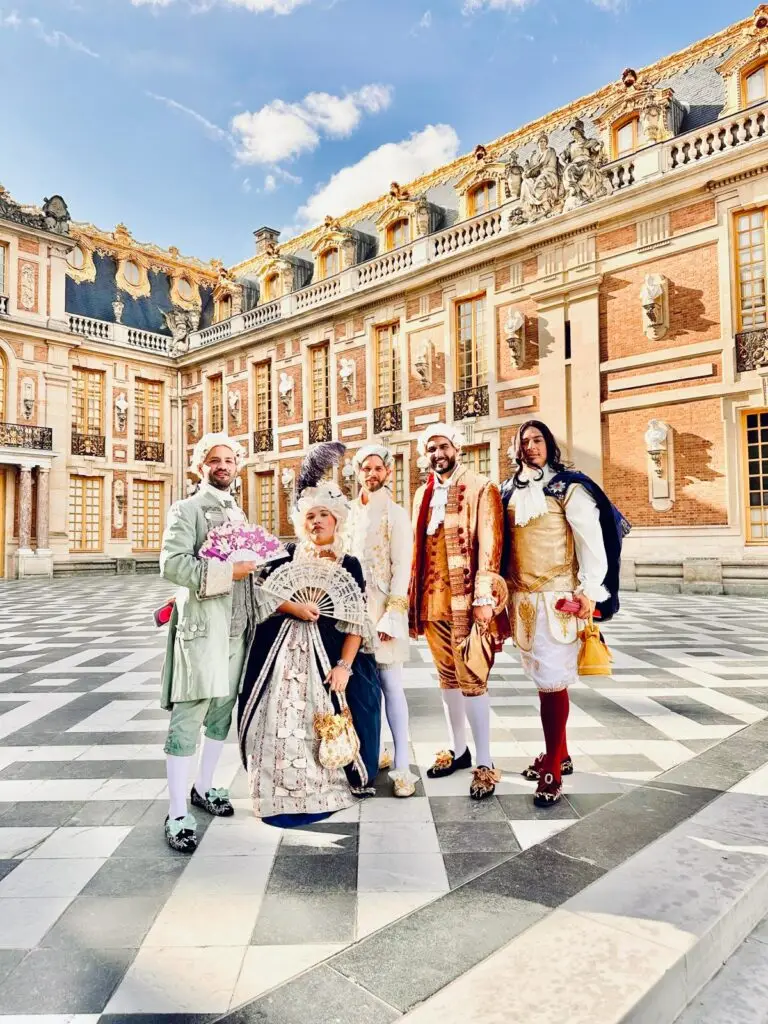
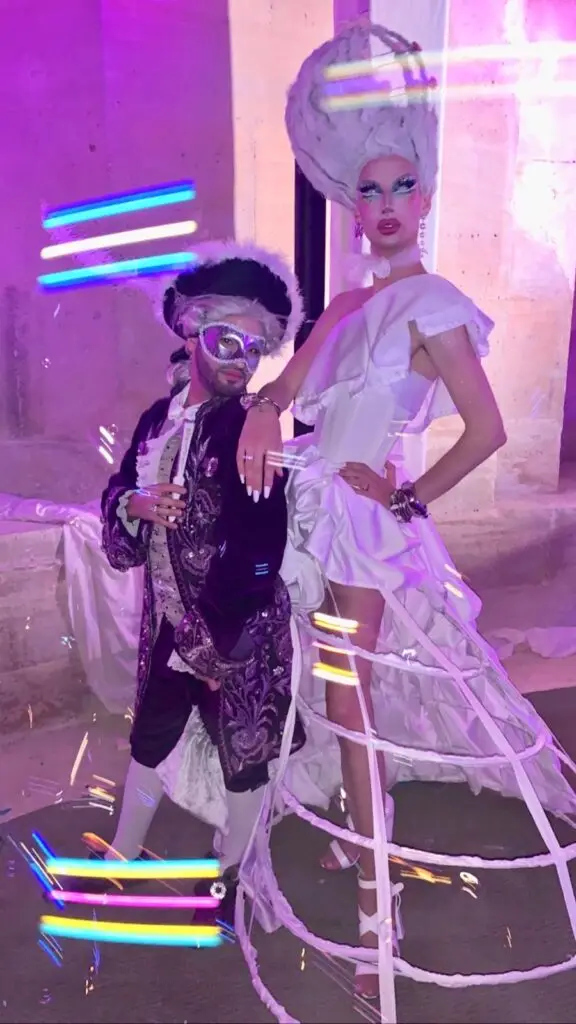
The Inspiration Behind the Magic
Juan’s creative process is as thoughtful as it is elaborate. When asked about what inspires his costume choices, he explains: “A bit of everything. In past years, the organizers would release the ball’s theme in advance, so people would have the time to imagine their costumes around that concept. The ones I can recall were, Alice in wonderland, mythical creatures of Greek mythology, and the zodiac signs among others.”
But inspiration doesn’t stop with official themes. Popular culture plays a significant role in shaping the visual landscape of the ball. “Recently, the release of the TV series ‘Versailles’, had a huge impact on the style of costumes. All these, together with famous films such as Marie Antoinette, Mozart, Farinelli and more, had helped me to create my costumes.”
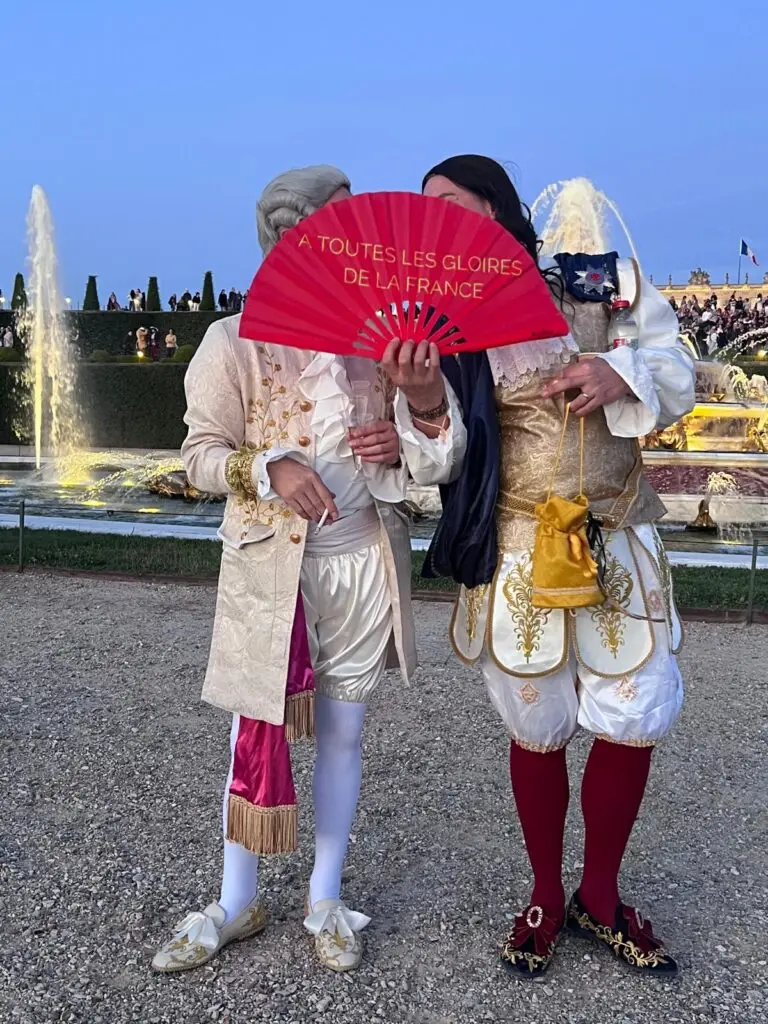
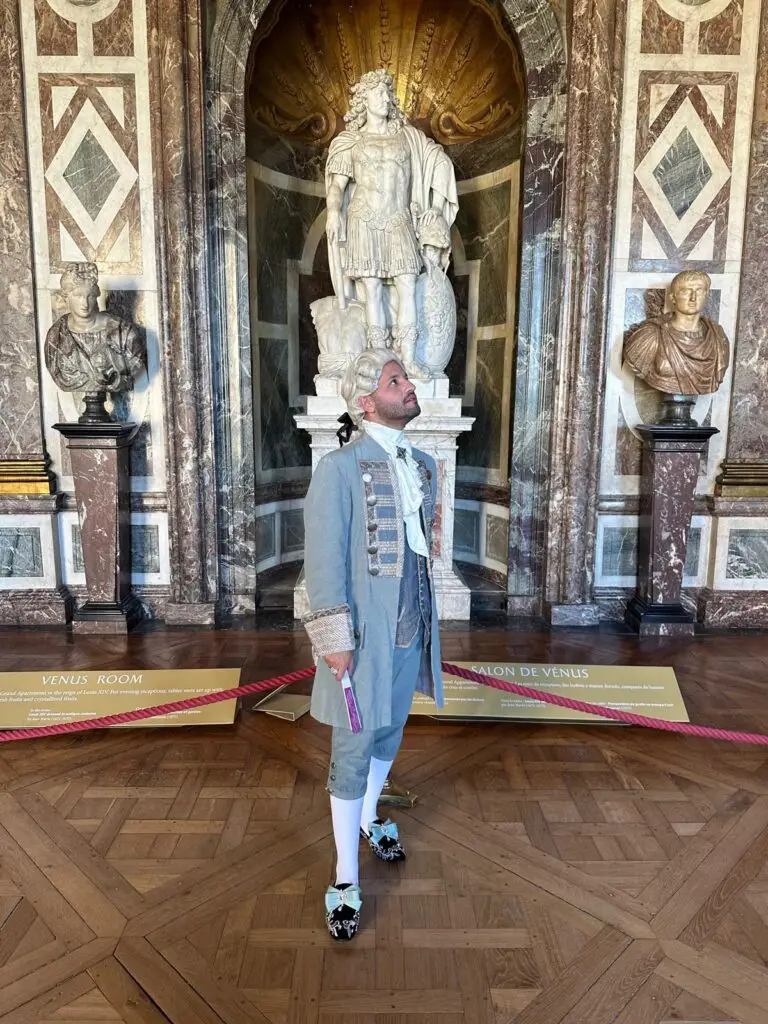
This blend of historical accuracy and contemporary inspiration creates a unique aesthetic that honors the past while remaining relevant to modern audiences. It’s a delicate balance that Juan has mastered over his ten years of attendance.
Finding Beauty in the Margins of History
What truly sets Juan apart from other attendees is his eye for the overlooked figures of history. While most people gravitate toward the obvious choices, Juan finds magic in unexpected places. “Most people go for a ‘king’ or ‘Marie Antoinette‘ costume. But I find uniqueness in courtesans, servants, military personnel, doctors or advisors to the king, etc.”
This approach reveals an artist’s understanding that history is made up of countless stories, not just the famous ones. By choosing to embody these lesser-known figures, Juan brings depth and authenticity to the ball that goes beyond surface-level glamour.
His character choices also demonstrate extensive historical research. Each costume represents not just fabric and thread, but hours of study into the roles, responsibilities, and social positions of his chosen characters. This scholarly approach elevates his work from mere costume-making to historical interpretation through art.
The Maharaja Moment: Pushing Creative Boundaries
Among Juan’s most ambitious projects was a costume that challenged conventional expectations while respecting historical precedent. “One year I decided to dress up as a Maharaja. Even though not a member of the French court, it was definitely a guest of Versailles. I’ve never worked with so many rhinestones in an outfit as I did with that one!”
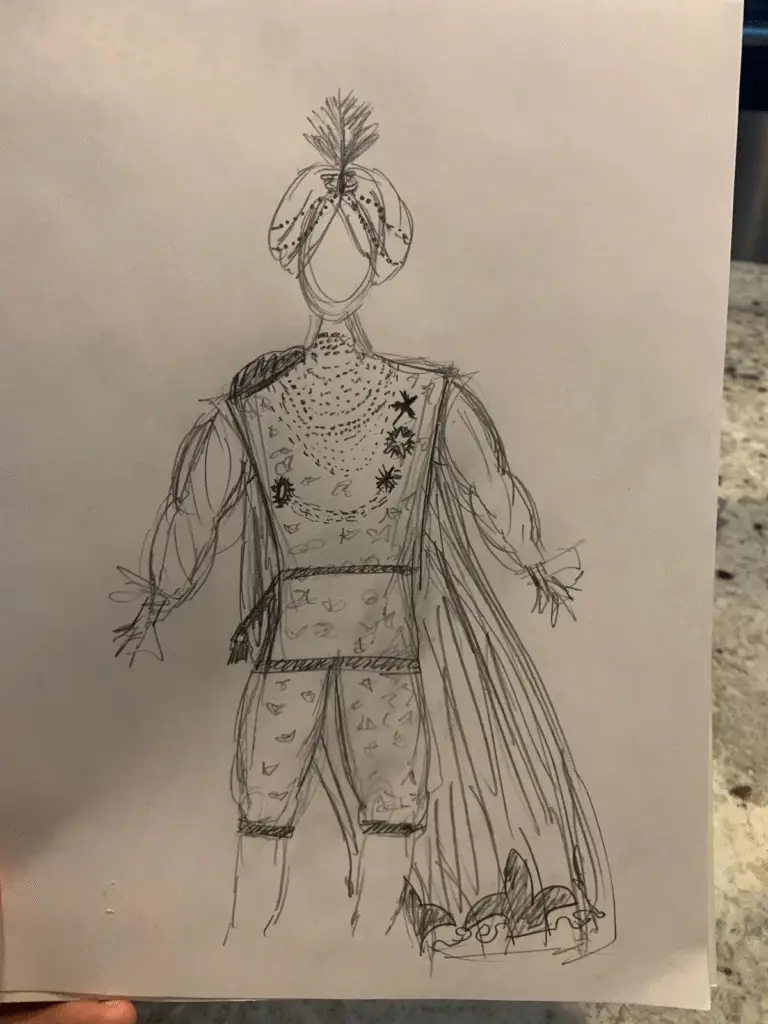
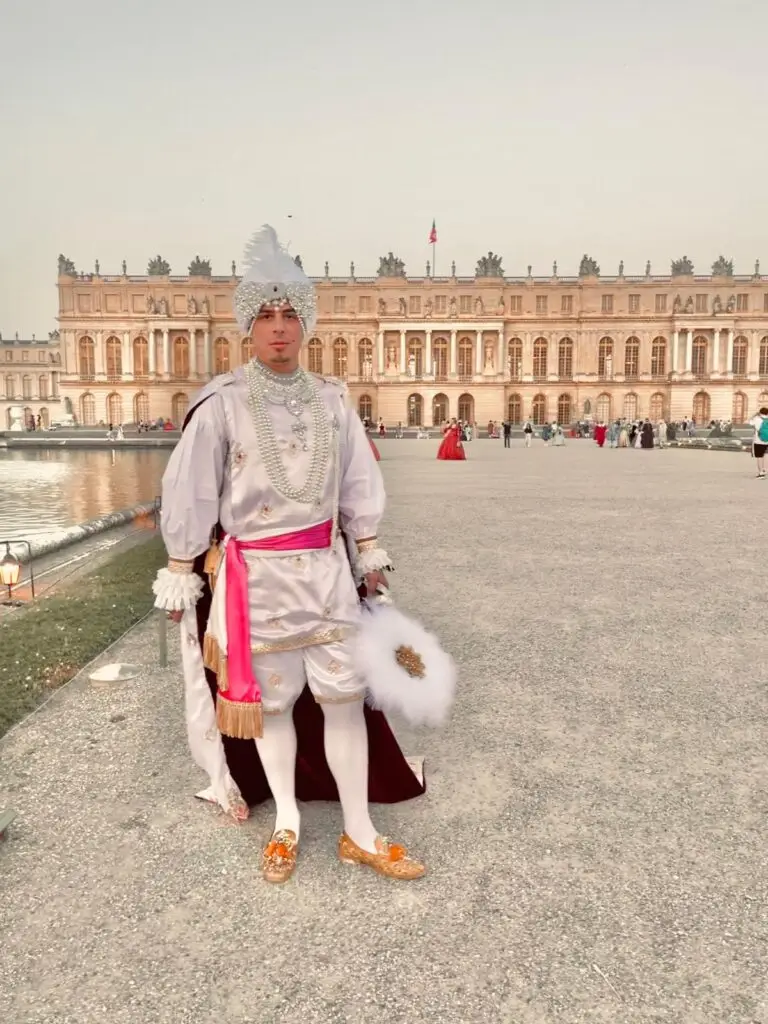
This choice exemplifies Juan’s sophisticated understanding of Versailles’ history. The palace wasn’t just home to French royalty—it was a center of international diplomacy where exotic visitors from around the world would have been received. By choosing to represent a Maharaja, Juan demonstrated both historical knowledge and creative courage.
The technical challenges of the Maharaja costume pushed Juan’s skills to new limits. Working with thousands of rhinestones required patience, precision, and an entirely different set of techniques than his previous creations. It’s these moments of creative problem-solving that transform costume-making from a hobby into a true art form.

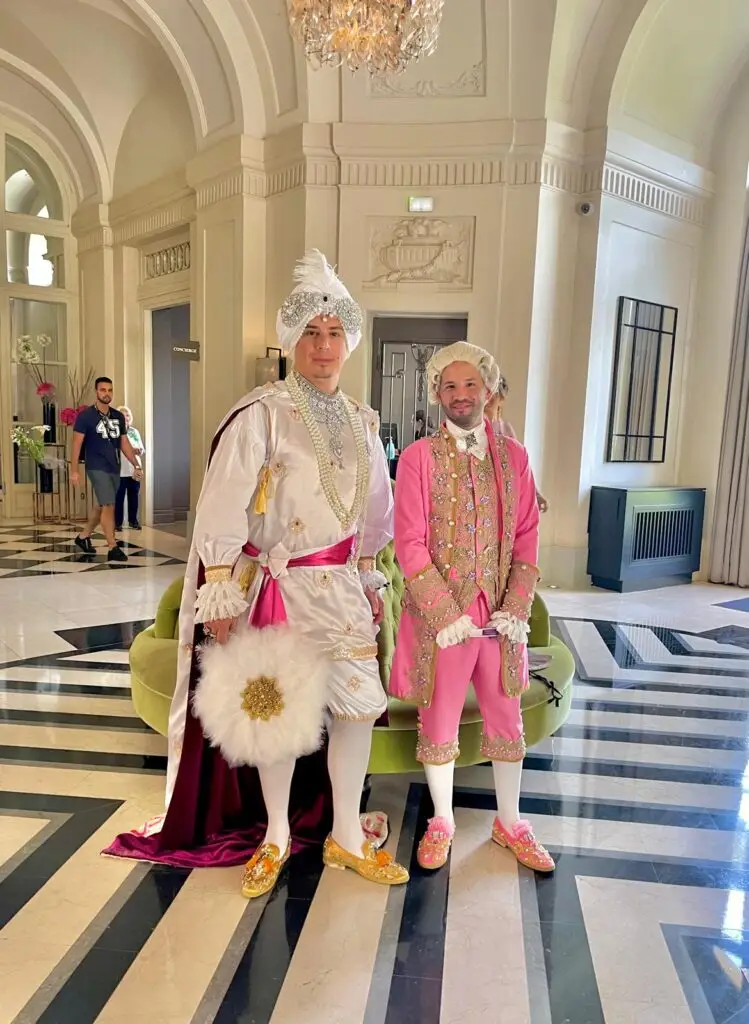
The Intoxicating Atmosphere of Versailles
Despite all the months of preparation, the real magic happens during those precious hours at the palace. Juan’s description of the atmosphere captures something essential about why the Grand Bal Masqué has become such a beloved event: “The atmosphere is intoxicating. Most patrons are in full baroque costume, while others have definitely try their best to portray their versions of baroque with a twist.”
This description reveals the inclusive nature of the event. While historical accuracy is appreciated, creative interpretation is equally welcome. The ball becomes a canvas where attendees can express their artistic vision while celebrating a shared love of history, fashion, and pageantry.
The visual spectacle is part of what keeps Juan returning year after year. Surrounded by hundreds of other costumed attendees in the opulent setting of Versailles, the experience transcends mere party-going to become something closer to time travel.
The Philosophy of Baroque Excess
Understanding the essence of the Baroque period is crucial to Juan’s approach to costume design. As he explains to first-time attendees: “Baroque was all about the excess, the lavishness.” This philosophy guides every design decision, from fabric choices to embellishment techniques.
However, Juan also understands that historical accuracy must be balanced with practical considerations. Modern attendees need to survive an entire night of dancing, socializing, and celebrating. “What’s the best material to withstand an all nighter, plus being comfortable (we all know actual outfits back then were not). Same with shoes and other accessories as wigs, jewelry and hats.”
This balance between authenticity and wearability is where true costume artistry shines. Each piece must transport the wearer to another century while remaining functional for hours of modern revelry.

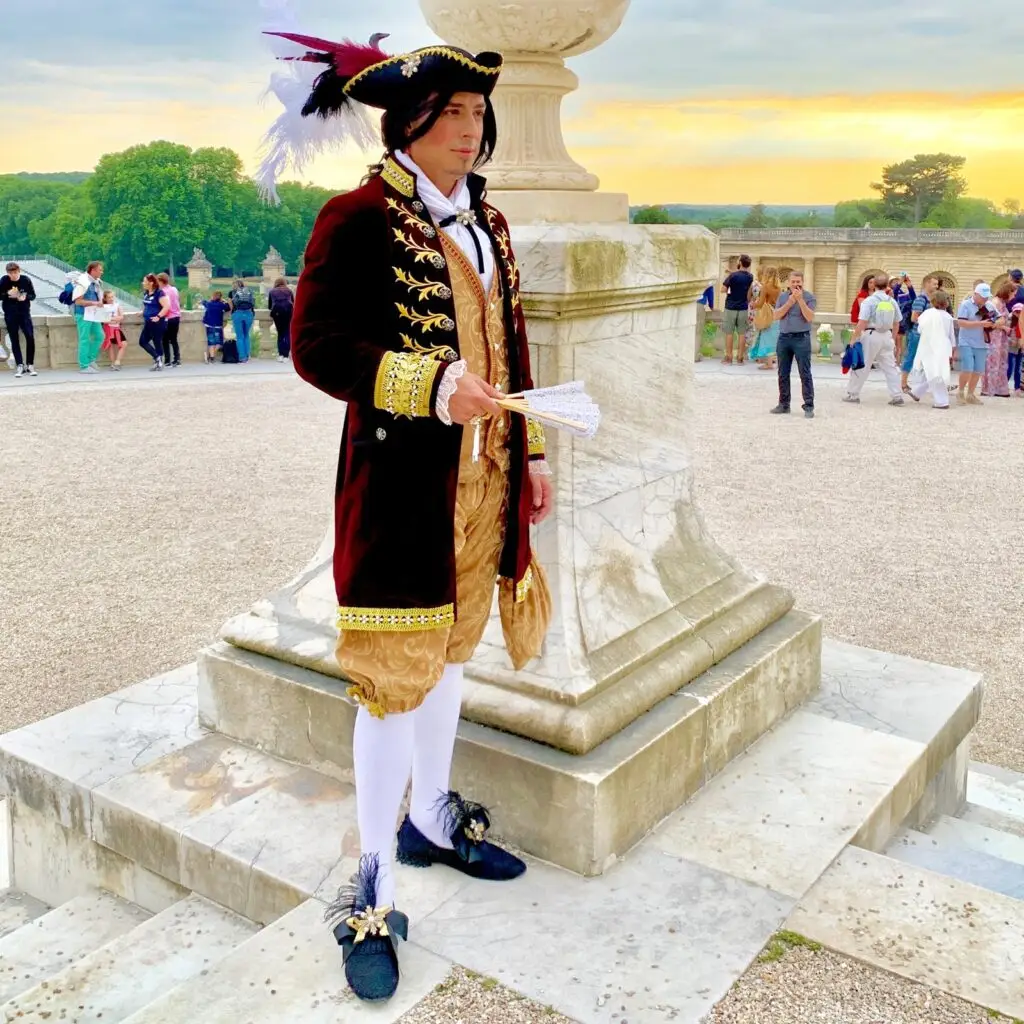
The Construction Process: Where Vision Meets Reality
Once the planning phase is complete, the real work begins. Juan’s description of his construction process reveals the incredible attention to detail that goes into each costume: “Once I find all the basic materials (fabrics, tassels, trims, etc) the confectioning process begins. Add to this all the embellishments, pearls, rhinestones, ruffles, silk flowers, ribbons, embroidery etc etc.”
The commitment to hand-construction is what truly sets Juan’s work apart. “Hand sawn all mine, until the last one. I’ve used a costume coat once to embellish it, so we could say I’ve repurposed it. Now that I know how to use a sawing machine, I may be able to shorten the labor time and get more creative with costumes.”
This dedication to hand-sewing represents more than just technique—it’s a meditation on craftsmanship in an age of mass production. Each stitch connects Juan to centuries of traditional garment-making, creating a tangible link between past and present.
The Magic of Making
When asked about his favorite part of the entire costume creation process, Juan’s answer reveals the heart of true creativity: “The inspiration and imagining stage. It’s so fun to create things in your mind!” This joy in the creative process—the pure pleasure of imagining possibilities—is what separates true artists from those simply going through motions.
But the satisfaction extends far beyond personal fulfillment. “Yes, anyone can buy one of a store, or maybe a big name retailer, but it gives me pleasure making my own, an original and unique costume no one else will have.” In a world of increasing homogenization, this commitment to uniqueness becomes almost revolutionary.
Juan’s approach to costume-making is both practical and philosophical. By creating something entirely unique, he ensures that his contribution to the visual spectacle of the ball is genuinely his own. No one else will arrive wearing the same outfit, because no one else has invested the months of thought, research, and labor that go into each of his creations.

Wisdom Earned Through Experience
After ten years of attendance, Juan has accumulated a wealth of practical wisdom about navigating the Grand Bal Masqué. His advice for first-time attendees is comprehensive, covering everything from creative philosophy to logistical preparation.
On the creative side, Juan’s message is one of boundless possibility: “Have fun creating your costume. Have no limits. There’s no right or wrong way to do it, unless you are going wearing black jeans and a pirate’s shirt (yes, I’ve seen it happen).” This encouragement comes with the authority of someone who has seen every possible interpretation of baroque fashion.
The Practical Realities of Versailles
Juan’s advice extends beyond costume creation to encompass the full experience of attending the ball. “Enjoy the city of Versailles, its people and what they have to offer. Respect everything and others. You will see people expressing themselves via creative costumes and dance. You will see boys wearing dresses, and girls using pants instead of skirts, crazy wigs, crazy make up and colors, fancy fans, shoes, hats, feathers. Enjoy the visual aspect of it.”
This description captures the transformative nature of the event. The ball becomes a space where conventional social norms are suspended in favor of creative expression and historical fantasy. It’s a rare opportunity for adults to play dress-up on the grandest possible scale.
While the artistic aspects of the ball are enchanting, Juan doesn’t shy away from discussing the practical challenges that come with attending such a popular event in a small historic city. “Prepare, prepare, prepare. Versailles is a small city, with their infrastructure more limited than its sister Paris. Plan lodging, food and transportation ahead of time.”
This advice speaks to Juan’s understanding that the magic of the evening depends on careful preparation. By handling logistics in advance, attendees can focus on enjoying the experience rather than worrying about practical concerns.
Juan’s wisdom comes from experience, including witnessing the evolution of the event over his decade of attendance. As the ball has grown in popularity, particularly through social media exposure, the practical challenges have increased. Early preparation has become more crucial than ever.
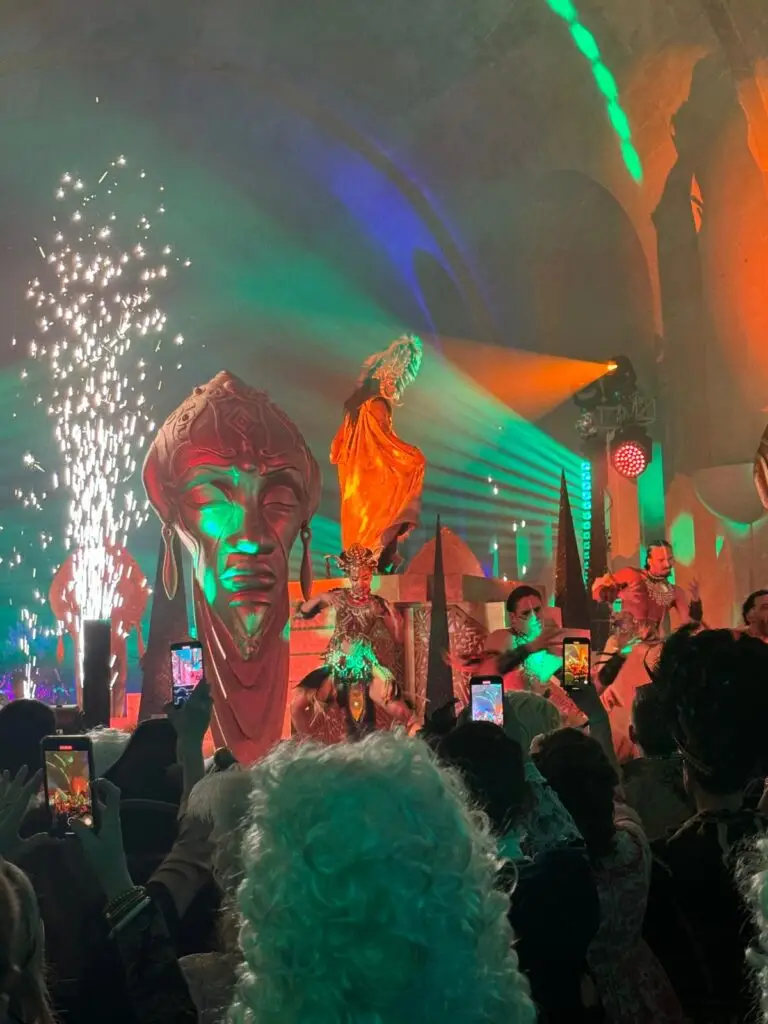
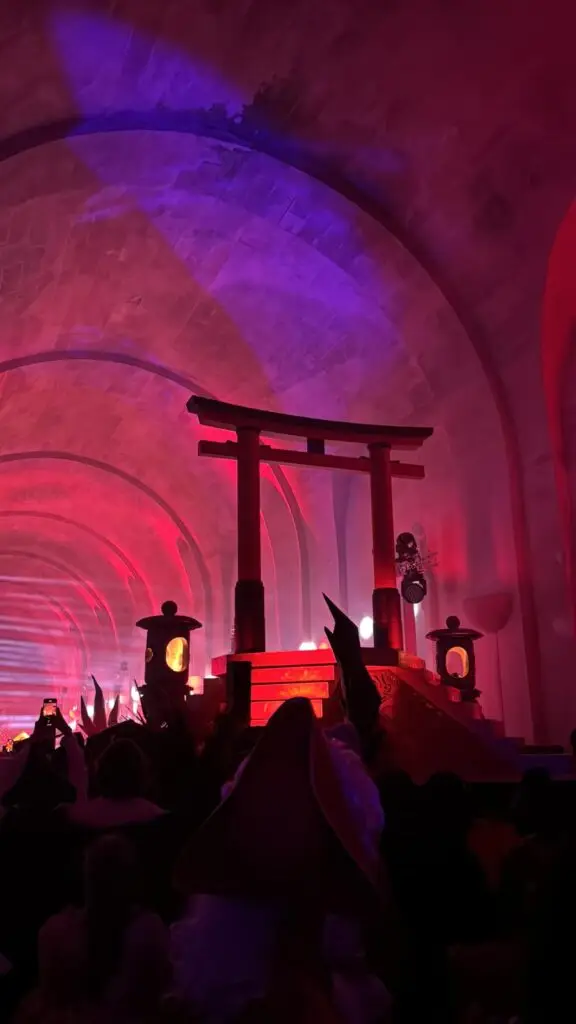
The Responsibility That Comes with Fantasy
With the freedom to express creativity and inhabit historical fantasy comes responsibility, and Juan is clear about the expectations for attendees. “Be safe, respectful and open minded. Have fun responsibly. No one there is your mom, dad, nanny, or guardian. It’s an adults party.”
This reminder speaks to the unique nature of the Grand Bal Masqué. It’s a space where adults can explore creativity and self-expression while maintaining respect for the venue, the event, and each other. The palace setting demands a certain level of decorum, even within the context of elaborate fantasy and celebration.
Juan’s emphasis on respect extends beyond behavior to encompass appreciation for the creative efforts of other attendees. After investing months in creating their own costumes, participants develop a deeper appreciation for the work that goes into everyone else’s creations.
The Evolution of Personal Style
Over his ten years of attendance, Juan has not only perfected his technical skills but also developed a distinctive personal style that sets his work apart. His evolution from store-bought costumes to hand-sewn masterpieces represents more than just improved technique—it’s the development of an artistic voice.
Juan’s choice to focus on historically accurate but lesser-known figures demonstrates a mature understanding of how to make an impact at an event where standing out requires both creativity and sophistication. Rather than competing with the most obvious choices, he has carved out his own niche within the broader tapestry of the ball.
The technical progression in his work, from basic construction to elaborate embellishment with thousands of rhinestones, shows an artist constantly pushing his own boundaries. Each year’s costume builds on the lessons learned from previous creations, resulting in increasingly ambitious and successful projects.
A Philosophy of Authentic Expression
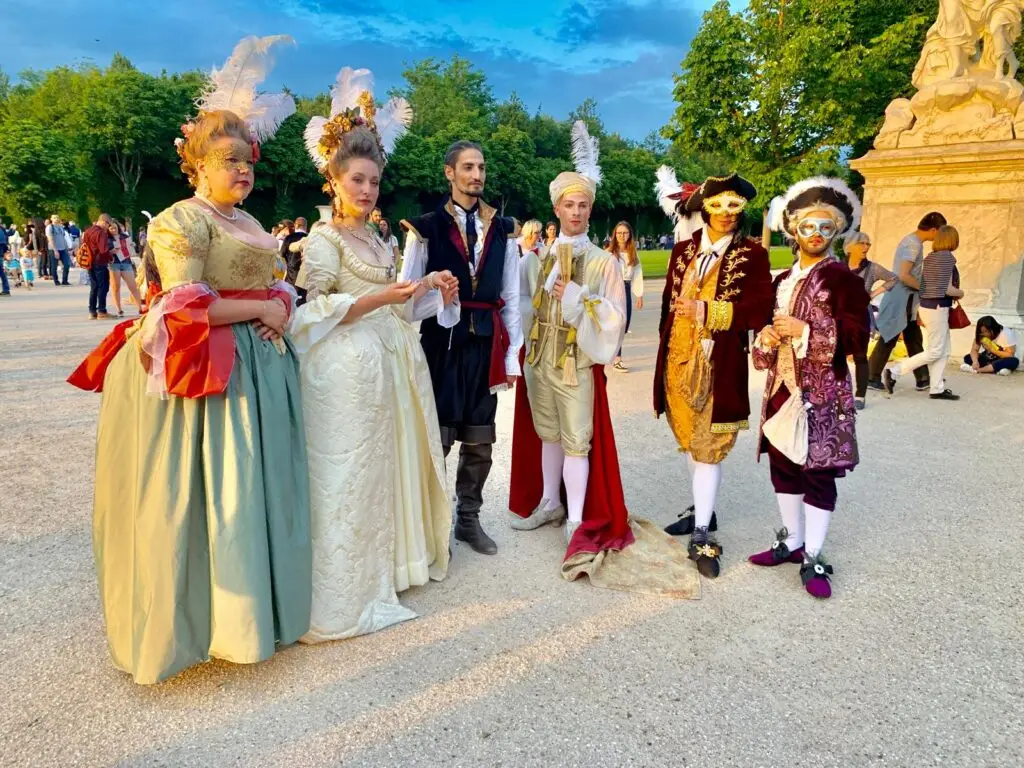
Juan’s approach to the Grand Bal Masqué embodies a philosophy that goes beyond mere costume-making. His work represents a commitment to authentic expression in an age of digital reproduction and mass production. By investing months in creating something entirely unique, he makes a statement about the value of individual creativity and traditional craftsmanship.
This philosophy extends to his advice for others interested in attending the ball. Rather than simply encouraging people to rent costumes or buy elaborate outfits, Juan advocates for personal investment in the creative process. The months of planning, research, and construction become part of the experience, not just preparation for it.
The satisfaction Juan derives from his work—”it gives me pleasure making my own, an original and unique costume no one else will have”—speaks to a deeper human need for creative expression and individual identity. In a world where so much is standardized and mass-produced, the act of creating something entirely personal becomes profoundly meaningful.
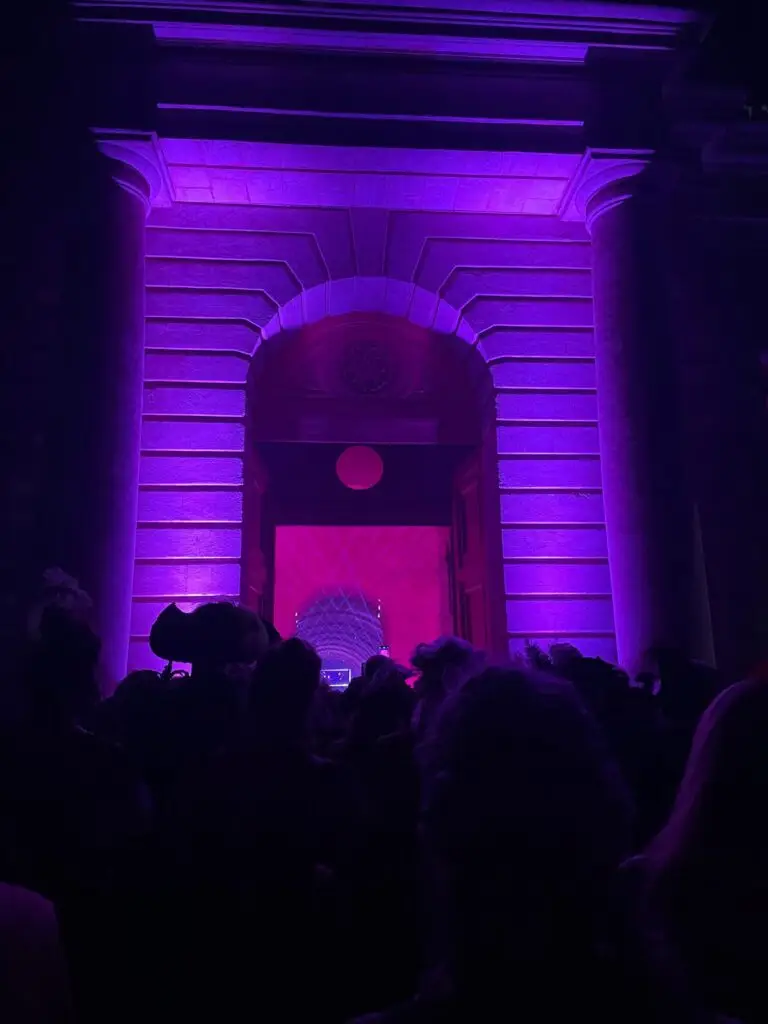
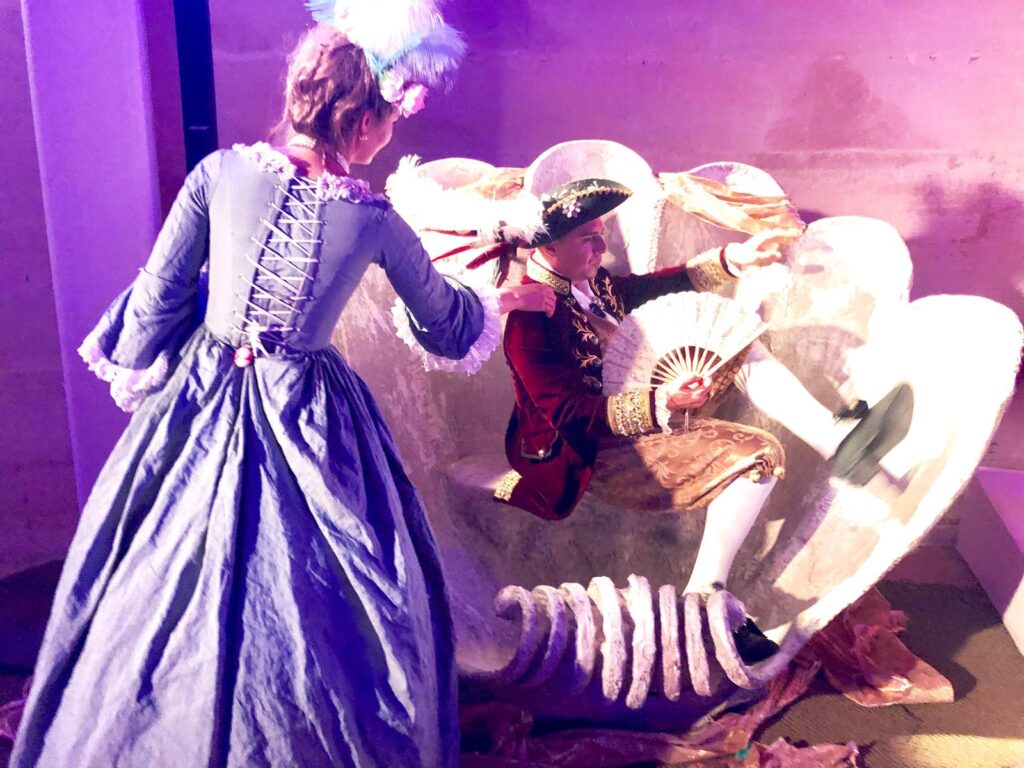
The Legacy of a Decade
As Juan takes his first break from attending in a decade (“being this year the first time I won’t be able to attend”), his legacy remains in the inspiration he’s provided to countless other attendees and the standard of craftsmanship he’s maintained over ten magical nights at Versailles. His journey from party store pirate to master costume creator illustrates what’s possible when passion meets persistence.
The months-long creative process, the commitment to hand-craftsmanship, and the joy found in creating something truly unique all serve as reminders that in our fast-paced, digitally-mediated world, there’s still profound value in taking time to create something beautiful with our own hands.
Juan’s story also demonstrates the transformative power of finding the right creative outlet. What began as a simple desire to attend an interesting party evolved into a decade-long artistic practice that has brought joy, challenge, and personal growth. His costumes have become more than just clothing—they’re expressions of creativity, historical knowledge, and personal identity.
For those inspired by Juan’s journey, the message is clear: start where you are, use what you have, but most importantly, don’t be afraid to dream big and create something that has never existed before. Whether it’s a rhinestone-encrusted Maharaja costume or a carefully researched courtier’s outfit, the magic lies not just in the final result but in the months of imagination, planning, and creation that bring it to life.

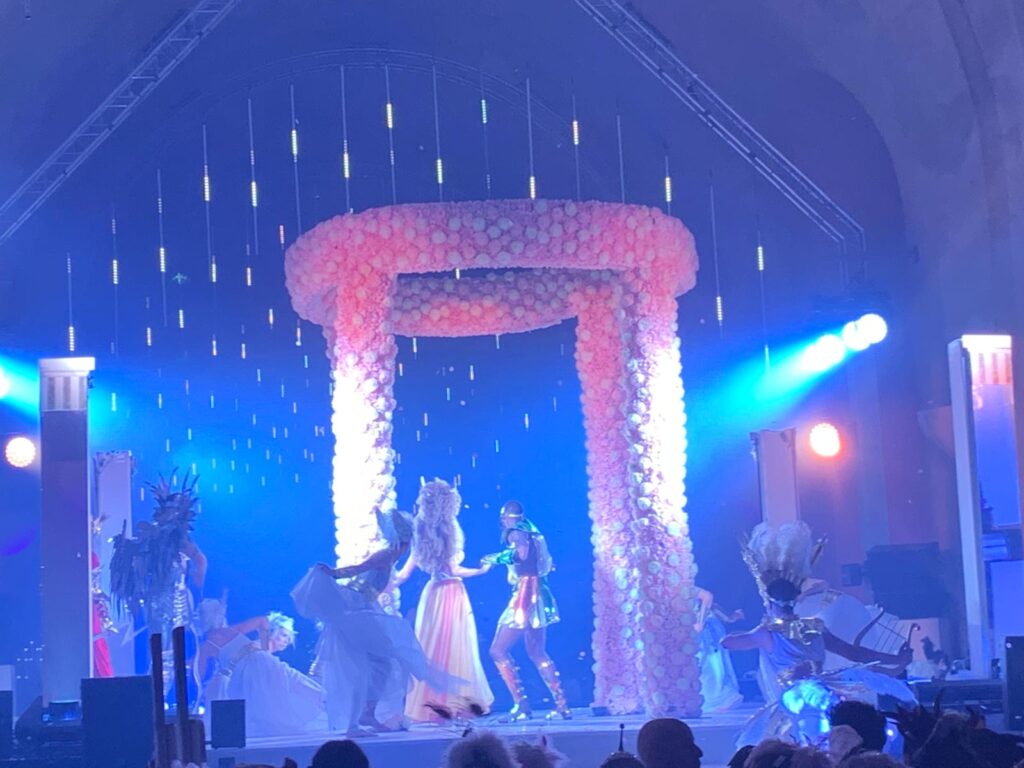
The Grand Bal Masqué continues to enchant attendees from around the world, and artists like Juan Amoroso (@juanderlust80) ensure that the tradition of creativity, craftsmanship, and celebration lives on in the very halls where history’s greatest parties once unfolded. His decade of dedication proves that sometimes the most magical transformations happen not in a single night, but through years of passionate commitment to bringing beauty and wonder into the world.
Have you attended the Grand Bal Masqué or are you planning to attend? We’d love to feature more stories like Juan’s. Reach out to us at [email protected].
